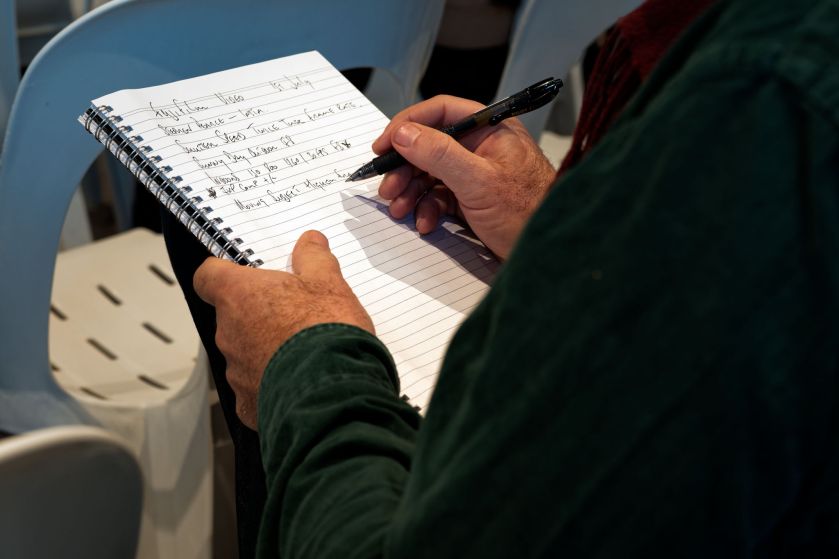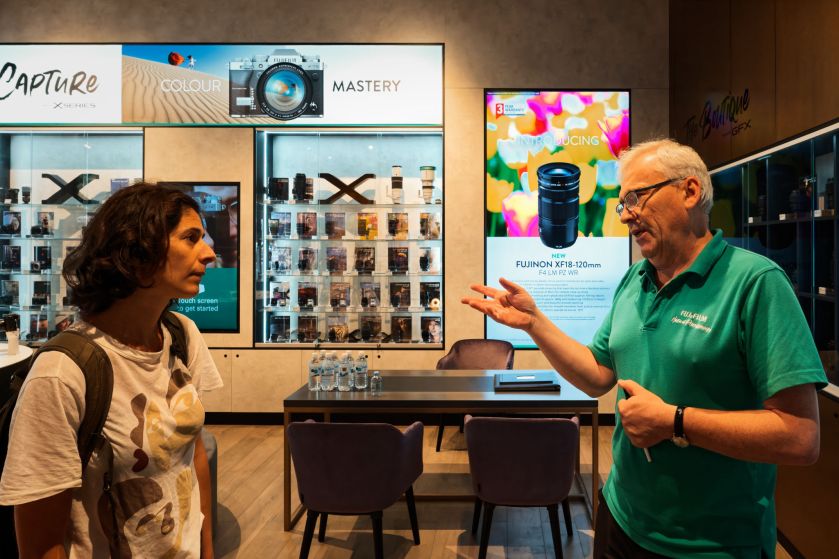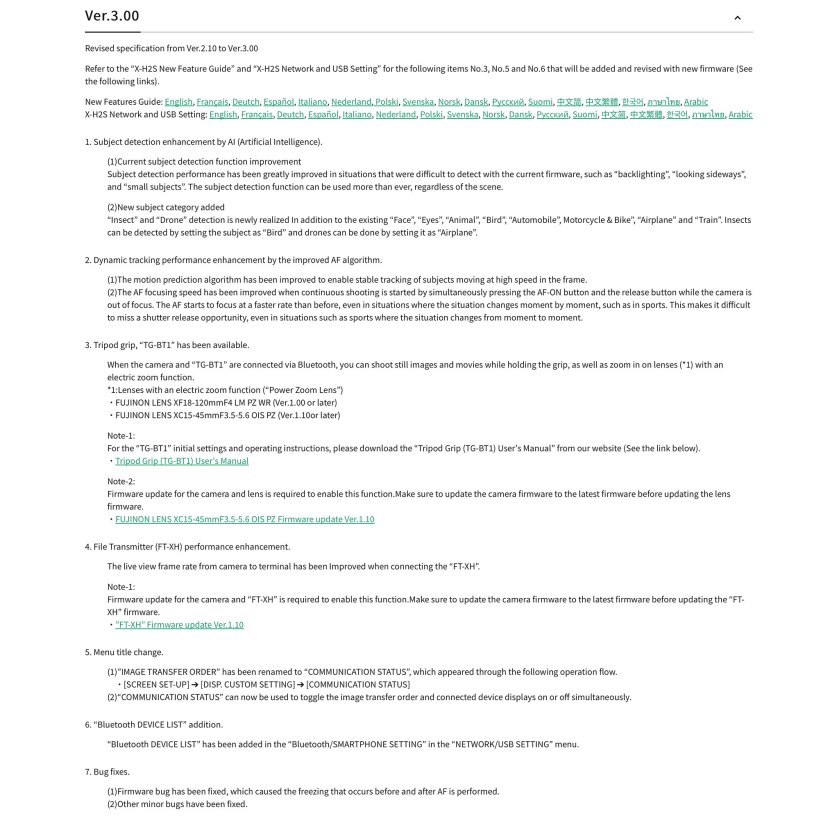Last Saturday I was in the Sydney CBD on a series of errands, had some time to spare so dropped into the Fujifilm House of Photography, borrowed a Fujifilm X-S20 and Fujinon XF 18-120mm f/4.0 LM PZ WR with their kind permission, stepped out the door accompanied by a staff member who was keeping a keen eye on camera and lens, then rapidly snapped a short series of pictures of which these were the least awful!
Of course it helps if you are a little familiar with the myriad possibilities for setting up any given digital camera but time was of the essence and I wanted get a quick and effective feel of how both items might work when the files are processed in DxO PhotoLab Elite 6 and its plug-ins, all of which were updated to support the X-S20 the week before.
I processed the X-S20’s files to quick-and-dirty proof (not exhibition print) quality to reflect the strange light and weather that day, choosing my default colour transparency film simulation, Digital Films/Fujifilm Astia, for its excellent rendering of natural variations in skin colour.





Although this article is not a review of either camera or lens, the brief time I spent with both was enough to show that Fujifilm really is onto something special and I hope to be able to try them out in combination again in future.
In-depth reviews of the X-S20 are beginning to appear online now and I’ll be publishing some of them here after watching them.
Meanwhile the Fujinon XF 18-120mm f/4.0 has been out for a while having been announced alongside Fujifilm’s X-H2S over a year ago in 2022 and despite some initial scepticism from first-look reviewers, still photographers and videographers who’ve spent time with it to understand its uniqueness have come away impressed.
I’ve long been waiting for a zoom lens like this one with its very decent 27-183mm focal range, lightweight plastic body, optical and mechanical design by Fujifilm’s legendary Fujinon cinema lens division and affordable pricing and it is top of my lens wishlist now for documentary photography and video production.

The Fujinon XF 18-120mm f/4.0 balanced very well with the X-S20’s small and lightweight body and I’ve previously handled this lens while attached to a Fujifilm X-H2 and an X-H2S gripped and ungripped.
Although I prefer using heavier, battery-gripped hybrid cameras for handheld video production such as the X-H2S with Fujifilm VG-XH Vertical Battery Grip, cage and accessories as needed, the X-S20 gave the impression it would work well as a small, light and discrete video camera with the non-OIS Fujinon XF 18-120mm f/4.0 or either of its two OIS kit lens options, the Fujinon XF 18-55mm f/2.8-4 R LM OIS and the Fujinon XC 15-45mm f/3.5-5.6 OIS PZ.
I’ve rarely used telephoto lenses over 105mm (35mm sensor equivalent) except for the odd times I’ve had to cover packed press conferences with a borrowed 70-200mm or 80-200mm zoom, and I couldn’t find a personal use for the university art school’s Nikkor 80-200mm f/2.8 when I was studying then teaching there.

Normally I cover events like those at Fujifilm House of Photography with three Fujinon XF prime lenses and swap them about as needed but I’ve often wondered if I’d achieve more keepers and greater variety with a zoom lens like the Fujinon XF 18-120mm f/4.0 LM PZ WR.
A crucial lesson I learned years ago from the late, great filmmaker and photographer William Klein was that one must constantly jump out of one’s comfort zone and a great way to do that is to use lenses and therefore ways of seeing that one normally would not.
Two legendary Nikon Nikkor manual focus lenses, 28mm and 180mm (18mm and 120mm in APS-C)
Accordingly I chose to bounce between the two extremes of the XF 18-120mm f/4.0 LM PZ WR’s focal range, 18mm and 120mm, or in their 35mm sensor equivalents 27mm and 183mm, during this brief lens and camera tryout.
I don’t recall the art school owning a Nikon 28mm wide-angle or 180mm telephoto lens though there was a 24mm lens in the store-room: it wasn’t my favourite focal length then or now, being too long for some things and too wide for others.

After switching from Nikon SLRs to Leica rangefinder cameras I bought an Elmarit-M 28mm f2.8 and felt right at home with it to the point where it permanently lived on one of my Leica M-4Ps, the one I carried all the time in a waist-pack.
If Fujifilm offered a Fujicron-style Fujinon XF 18mm f/2.0 or even f/2.8 compact lens sized to fit its X-Pro series cameras and smaller, then I’d be ecstatic and snap one up immediately.
The Fujinon XF 18mm f/1.4 R LM WR seemed like an excellent lens from my tryout of it at an event in 2021 but it may be better suited to DSLR-style and size cameras like the X-H2S, X-H2 and X-T5 and I don’t really need an f/1.4 maximum aperture as I use wide-angle lenses for their deep depth-of-focus and not their bokeh capabilities.
If bokeh is what you need and in abundance, however, consider the longer end of the XF 18-120mm f/4.0 when set at f/5.6 or f/8.0.
Using the XF 18-120mm f/4.0 at the opening of Sydney’s Fujifilm House of Photography in 2022

I made both of these photographs with the XF 18-120mm f/4.0 attached to our X-Pro2 and despite this camera not supporting the lens’ extra features via firmware I found the lens easy and fast to use and the results excellent for the focal length range.
Although many reviewers have commented that they miss having more on the wide end, preferring 16mm to 18mm, I have no such desire and would simply carry our Fujinon XF 14mm f/2.8 R alongside the zoom lens.
The only downside to that is that Fujifilm rates the XF 18-120mm f/4.0 LM PZ WR as more suitable for 40 megapixel sensor cameras while the XF 14mm f/2.8 R is not on that list.
Time to update the 14mm lens, Fujifilm?
Links
- B&H Affiliate Link – Click here to research and purchase or pre-order your choice of cameras, lenses and accessories for stills photography and video production whatever your genre and subject matter.
- DxO – website – PhotoLab, FilmPack, ViewPoint, PureRAW, Nik Collection – Our #1 choice in raw image processing and editing software.
- FastRawViewer – website – “Is your RAW converter slow while building 1:1 previews or culling RAW files? Use FastRawViewer – a great time-saver and an ideal RAW workflow helper.“
- Fujifilm DSC – FUJIFILM X-S20, FF220002 Owner’s Manual – HTML and PDF
- Fujifilm X Global – X-S20: Explore the unseen world
- Fujifilm X Global – XF18-120mmF4 LM PZ WR, Make Moving Memories – “With a 35mm zoom range equivalent to 27-183mm, a close focusing distance of 60cm (23.6in) throughout, and near-silent zoom and focusing controls, XF18-120mmF4 LM PZ WR is perfect for a broad range of motion production applications. These extend even further when considering the lens’s minimal focus breathing, stepless aperture control, and constant F4 aperture. Pull focus, make precise adjustments to iris, or change focal length without causing any noticeable distractions to the recorded footage.”
- Ken Rockwell – All Nikon 80-200 and 70-200mm f/2.8 Lenses Compared
- Ken Rockwell – Nikon 180mm f/2.8 ED AI-s, NIKKOR✱ED (1981-2005)
- Ken Rockwell – Nikon 180mm History
- Nikon – NIKKOR – The Thousand and One Nights No.10, AI Nikkor ED 180mm F2.8S
- Nikon – NIKKOR – The Thousand and One Nights No.57, “Approachability”, AI Nikkor 28mm f/2.8S
- Nikon – NIKKOR – The Thousand and One Nights No.67, AI AF-S Zoom-Nikkor 80-200mm f/2.8D IF-ED
- Unititled.Net Archive – William Klein: The Iconoclast of the Twentieth Century
- Unititled.Net Photo Galleries – Opening of Fujifilm Australia’s Fujifilm House of Photography at 2 Park Street in Sydney on Thursday 7th July 2022 – Two of these photographs were made with the Fujinon XF 18-120mm f/4.0 LM PZ WR, one at 18mm and the other at 120mm.
- Unititled.Net Photo Galleries – Sydney Photography Expo Roadshow at Camera House in Hornsby on June 20, 2021 – Most of these photographs were made with the Fujinon XF 18mm f/1.4 R LM WR.
- Wikipedia – William Klein (photographer)





























































































































































